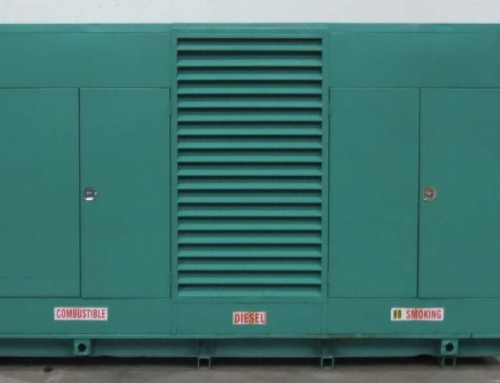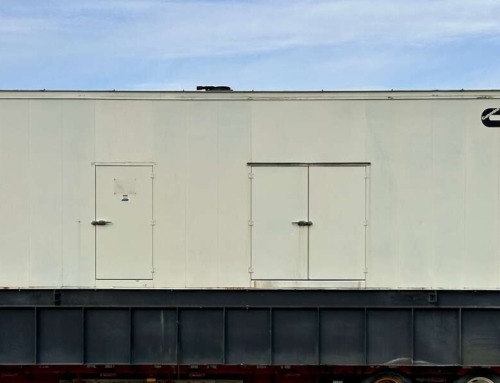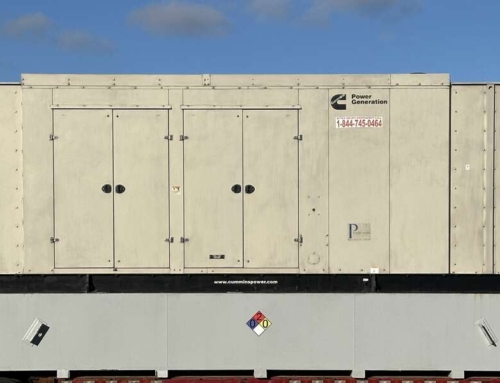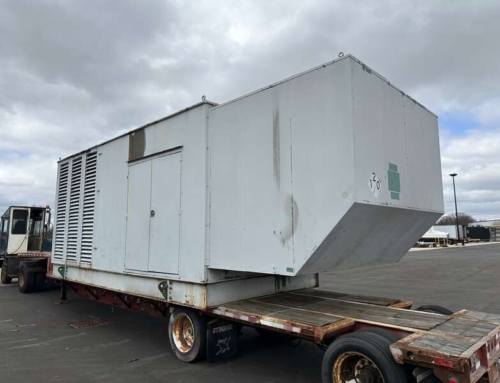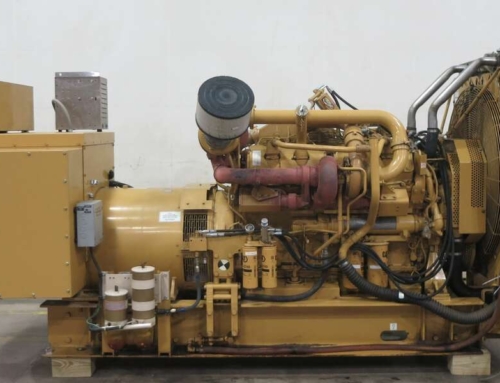The generator glossary provides a list of all terms and definitions related to the components, operations, and technical terms used when discussing the workings of a generator. A generator is an equipment that converts mechanical energy into electrical energy using fuel or natural gas, thus powering industrial appliances during power outages.
In this blog, let’s discuss the basic definitions of generator types, system types, parts and accessories, generator ratings, and process terms.
Table of contents
- Types of generators
- Types of systems
- Generator parts and accessories
- Generator ratings
- Process terms
Types of Generators
Backup generator: Backup generator or standby generator which quickly transfers power when there is a power outage within 10 to 30 seconds. It commonly uses a diesel engine.
Diesel generator: Diesel generators are used when you have no access to the power grid. It also uses a diesel engine or an alternator. It runs automatically during power outages and is used for the power backup purposes.
Generator: A generator uses natural gas or diesel fuel to power industrial machines and business buildings. It converts mechanical energy into electrical energy and is available in different types based on the fuel it uses.
Genset: A genset or generator set is a combination of the engine, alternator or generator end, control panel, and skid. It is interchangeably called a generator, generator set, or engine generator.
Marine generator: The marine generator is commonly used in boats and ships to power appliances. It also converts mechanical energy into electrical energy to power equipment during a ship’s voyage.
Natural gas generator: The natural gas generator converts the natural gas into electrical energy. It is used in both portable and backup generators.
Portable generator: The portable generator can be used in different locations and it is not meant for long-term use. It uses natural gas, diesel, and propane based on the generator model and provides 12-hour power backup of nearly 17,500 watts.
Rebuilt generator: The rebuilt generator is a generator that is taken apart and inspected to change or replace any damaged components based on the Original Equipment Manufacturer’s (OEM) specification. It also has a manufacturer’s warranty and provides good performance, quality, and reliability at a low cost.
Remanufactured Generator: Remanufactured generators help to avoid expensive downtime. It almost looks like a new generator as all internal parts are inspected and disassembled based on the OEM specifications.
Stationary Generator: Stationary generators are connected to the distribution panel and it is started manually or automatically when required. It is also known as backup generators or standby generators known to address emergency power needs.
Used Generator: It is a generator that already has a previous owner. It is tested and inspected for its performance and labelled as working or in repair.
Types of Systems
Air-cooled system: An air-cooled system is used to bring down the interior temperature of the generator to prevent damage. The cool air is taken from the atmosphere and sent into the generator.
Dual Fuel system: It is also called as bi-fuel generator as it can simultaneously work on natural gas and diesel.
Liquid-cooled system: It uses a radiator, water pump, and oil to maintain the generator’s interior temperature. The cooling liquid is distributed to the generator’s engine making it more durable. It is an expensive system and applicable for generators above 22 kilowatts.
Parts and Accessories
Alternator: The alternator is also called the generator end or gen end. It is responsible for converting mechanical energy into electrical energy through electromagnetic induction. It can be a separate unit or it works as a component in a genset.
Battery Charge Rectifier: It is an electrical device that is used to charge the battery by converting AC voltage to DC voltage.
Bearings: A bearing is a component that resembles a wheel and it helps in the seamless function of a machine. It helps to reduce friction between moving parts and it is available in different sizes for different uses.
Brush: It is a conducting element made using copper or graphite. It helps to control electric contact between moving elements and static elements.
Core: It is a bundle of wires or laminations in the center of the generator.
Enclosure: It is a protective cover for the genset to safeguard it from animals, weather, and other hazardous elements. These are NEMA 3R-rated and have locks to prevent the access of unauthorized persons damaging the genset.
Flywheel: It is also used instead of chemical batteries. It has a wheel-like machine that stores rotational energy. The energy stored is proportional to the flywheel speed.
Generator End: It is also called gen end or alternator which is used to convert mechanical energy into electrical energy.
Load bank: The load bank machine reflects the real weight of the generator to support, test, and determine the capability of the generator to handle the power load.
Lubricator: It is a device that provides lubricant which can be oil or other supporting liquids in a controlled amount into the pneumatic system.
Magneto: It is a small generator that uses permanent magnets to produce energy for internal combustion engines.
Relay: It is an electrical device that gets activated by the current in a circuit in order to open or close another circuit. It is a power-operated switch used to control the circuits.
Rotor: The moving or rotating part in a generator is called the rotor.
Skid: It is a base that is used to mount the genset components.
Starter: It is a device that is used to start the engine which can be manual or automatic.
Stator: It is a stationary or static component of the generator.
Transfer switch: It is used to switch the power load from the utility grid to the generator when there is a power outage. It can be done either manually or automatically.
Uninterrupted power supply (UPS): It is used to provide power during power outage or voltage reduction instantly. It is also known as battery backup as it ensures no power disruption is affecting your business process. It is used in labs, data centers, hospitals, clinics, and other businesses that can be impacted by power outages.
Water Jacket Heater: The water jacket is a setup where the water jacket or water-filled casing surrounds the device. It is used to maintain the temperature around the device. The water jacket has a metal sheath that has inlet and outlet vents that help to pump and circulate water to maintain the right temperature.
Windings: It is a coil of the generator that can be turned multiple times to create a continuous coil that allows the current to pass through. It has two windings called stator and rotor.
Generator rating types
Continuous power rating: It is a rating that defines the power supply of a machine for an extended period of time.
Generator Set Rating: It indicates the amount of power it can generate under different circumstances.
Emergency Standby Power (ESP) Rating: The maximum amount of power the generator can produce during a power outage.
Mission Critical Standby: It is a type of backup power system that provides continuous power supply during power outages.
Prime Power Rating: The maximum power produced by the generator for an unlimited time in various power loads.
Standby Power Rating: The maximum power produced by the generator during the energy conditions.
Emissions Rating: It is a percentage of pollutants emitted by the generator.
kW Rating: It is known as the amount of power produced by the generator.
Rated Voltage: Rated voltage or tolerance voltage is the maximum voltage the device can operate.
Process Terms
Alternating Current (AC): The current produced by the generator that changes direction periodically.
Direct Current (DC): The generator produces electricity that flows in one direction.
Frequency: The frequency is the amount of AC cycles produced in a second, it is measured in Hertz (Hz).
Generator RPM: It is a rotation per minute or RPM of the generator engine.
Generator sizing: The amount of power required from the generator to power all devices or equipment.
Off-peak: It is the time when electricity demand is low, during afternoon or night hours.
Peak: The maximum load the generator can produce for a short period.
To know more about generators and to choose the right backup solution, contact us today.
The CS diesel generators provide a wide range of new and used generators for all industrial purposes. We understand your requirements, evaluate the devices used in your industry and provide the right backup solution.
To get expert guidance to choose the right generator, reach us today!

